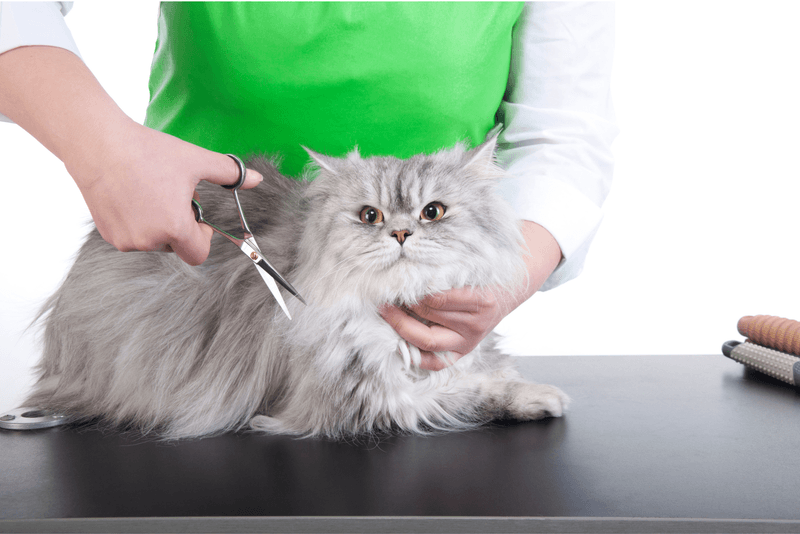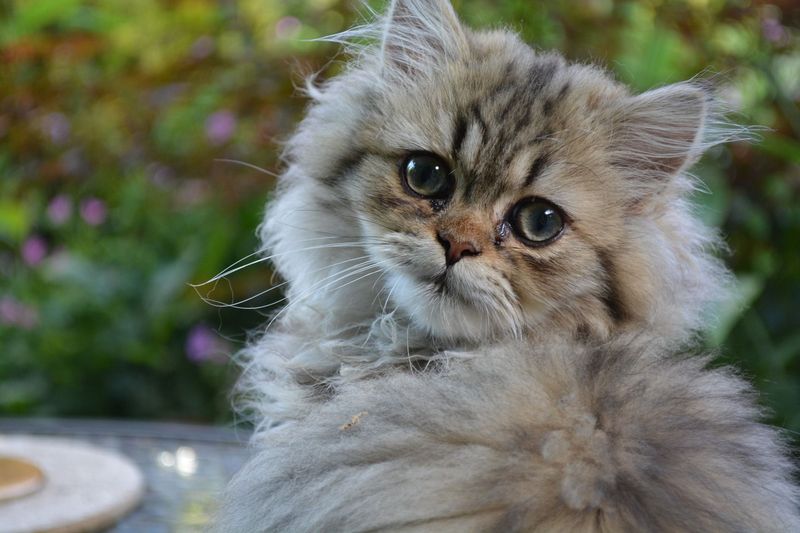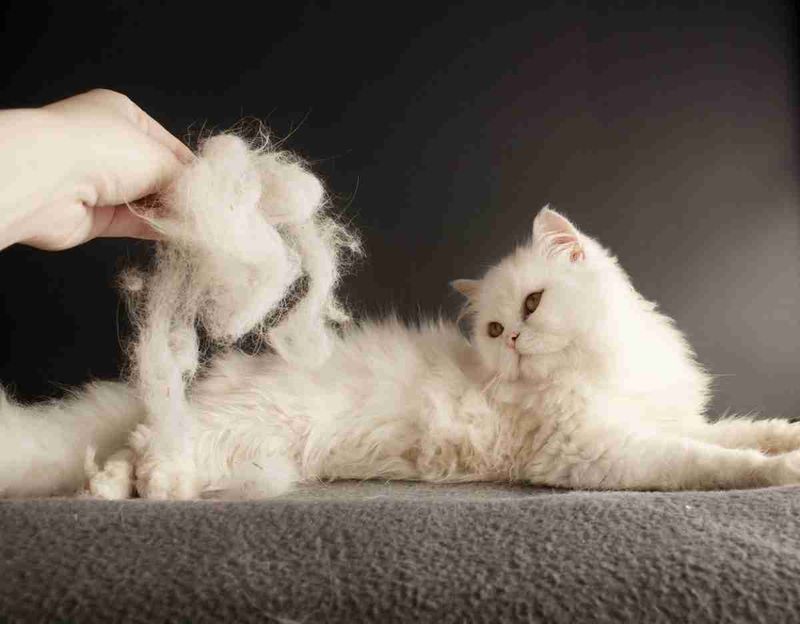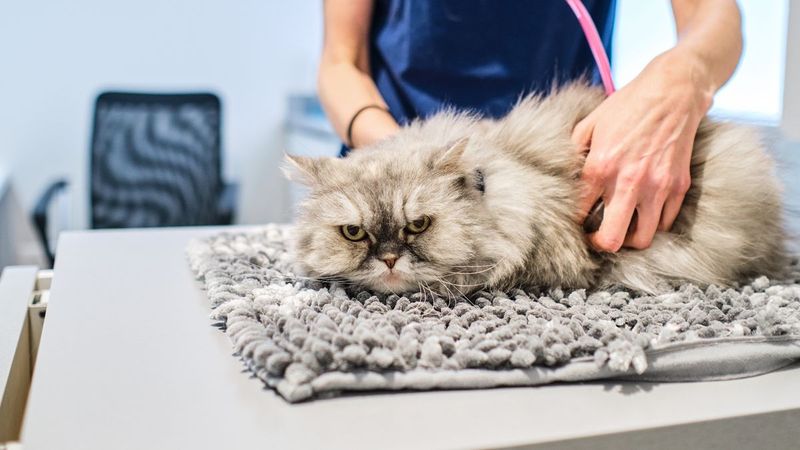A Persian cat isn’t just a pet—it’s a lifestyle. That flowing coat, that sweet, smushed face, that air of undeniable elegance… owning one feels like living with a tiny, fluffy aristocrat.
But behind all that beauty? A world of grooming, quirky personality traits, and a level of cat-care commitment that isn’t for the faint of heart. These cats demand more than just admiration—they need attention, patience, and a whole lot of brushing.
Think you can handle a cat with diva-level standards? One that might turn up its nose at the wrong brand of food but will melt into your arms for affection?
Before you welcome one of these glamorous furballs into your life, there are a few things you need to know. Let’s dive into the 14 must-know facts about Persian cats!
Understanding Persian Cat Grooming Needs

Persian cats are famous for their long, lush coats, which require regular grooming to maintain. This includes daily brushing to prevent tangles and matting, and occasional baths to keep their fur clean. Grooming is not just about beauty; it also helps in bonding with your pet. Dividing the grooming process into small, enjoyable sessions can make it a relaxing experience for both the cat and the owner. You may also need to trim their fur around the eyes to prevent irritation. Understanding these grooming needs is crucial for any potential Persian cat owner.
Importance of a Balanced Diet

Feeding your Persian cat a balanced diet is essential to ensure their health and well-being. Their diet should include a mix of proteins, fats, and carbohydrates tailored to their specific needs. Persian cats may have sensitive stomachs, so it’s advisable to gradually introduce new foods. Consult with a veterinarian to choose high-quality cat food that provides essential nutrients and supports a healthy coat. Offering fresh water and controlling portion sizes can prevent obesity. By focusing on a balanced diet, you will contribute to your cat’s overall health and happiness.
Choosing the Right Litter Box

Selecting the right litter box is vital for your Persian cat’s comfort and hygiene. Choose a box with high sides to prevent litter from scattering, yet accessible enough for your cat to enter easily. Using unscented, clumping litter can help minimize odors and make cleaning more manageable. Keep the litter box in a quiet, private area to encourage use. Regular cleaning is crucial to prevent unpleasant smells and maintain a healthy environment. Ensuring your cat is comfortable with their litter box will minimize accidents and help them settle into their new home.
Understanding Persian Cat Temperament

Persian cats are known for their calm and gentle temperament, making them ideal companions for those seeking a serene pet. They enjoy quiet environments and can be quite affectionate with their human companions. However, they may be shy around strangers and prefer a predictable routine. Providing a stable environment and respecting their need for space will help them feel secure. Engaging them with gentle play and affection will strengthen your bond. Understanding their temperament is key to building a harmonious relationship with your Persian cat.
Health Checks and Veterinary Care

Regular health checks are essential for maintaining your Persian cat’s well-being. Schedule routine veterinary visits to monitor their health and catch any potential issues early. Persian cats are susceptible to hereditary health problems like polycystic kidney disease and respiratory issues. A veterinarian can provide guidance on vaccinations, dental care, and diet. Keeping track of their health records will help you stay informed about their needs. By prioritizing veterinary care, you can ensure a long and healthy life for your feline friend.
Creating a Cat-Friendly Environment

Creating a cat-friendly environment will ensure your Persian cat feels at home. Provide comfortable resting places, scratching posts, and interactive toys to stimulate their mind and body. Soft bedding and sunny spots are great for lounging, while vertical spaces allow for climbing and exploration. Ensure all potential hazards, like toxic plants or small objects, are removed. By tailoring your home to their needs, you’ll create a space where your Persian cat can thrive. A safe and nurturing environment is the foundation for a happy pet.
The Art of Socializing Your Persian Cat

Socializing your Persian cat is crucial to developing their confidence and comfort around people. Start by introducing them to family members and friends in a controlled setting, allowing them to approach at their own pace. Use treats and gentle encouragement to reinforce positive interactions. Gradual exposure to new experiences, like different sounds and environments, will help them adapt. Respecting their boundaries and understanding their social cues will ensure a friendly and well-adjusted pet. By focusing on socialization, you’ll foster a happy and sociable Persian cat.
Understanding Persian Cat Vocalizations

Persian cats are typically quiet, but they do have their own unique way of communicating. While they may not vocalize as much as other breeds, their soft meows and purrs can be quite expressive. Learn to recognize their vocal cues, as they often signify specific needs or emotions. Whether they’re hungry, seeking attention, or simply chatting, understanding these vocalizations will enhance your connection. Responding appropriately to their meows builds trust and ensures their needs are met. By tuning into their vocal signals, you’ll foster a deeper bond with your Persian cat.
Managing Shedding and Allergies

Managing shedding is a part of life with a Persian cat. Their thick coats shed regularly, and daily brushing can help control loose fur. Investing in a good vacuum cleaner and lint rollers will keep your home tidy. If you or family members have allergies, consider using air purifiers and hypoallergenic bedding. Regular grooming reduces allergens and keeps the coat healthy. Understanding and managing shedding is crucial for maintaining a harmonious living environment. With the right tools and practices, you’ll minimize shedding-related challenges and enjoy a cleaner home.
Traveling with a Persian Cat

Traveling with a Persian cat requires preparation and patience. Choose a sturdy and comfortable carrier that allows your cat to feel secure. Gradually acclimate them to the carrier by associating it with positive experiences. Plan breaks during long journeys, and never leave them unattended in a vehicle. If traveling by air, check with airlines for specific pet travel guidelines. Keeping familiar items like blankets or toys nearby can provide comfort. With careful planning and attention to their needs, traveling can be a smooth experience for both you and your Persian cat.
Recognizing Stress and Anxiety

Recognizing stress and anxiety in your Persian cat is essential to providing proper care. Signs may include hiding, reduced appetite, or excessive grooming. Identifying triggers, such as changes in environment or routine, will help you address the root cause. Providing a calm and consistent environment, along with comforting items, can alleviate stress. Engage in gentle play and offer affection to reassure your cat. Consulting with a veterinarian or animal behaviorist may provide additional insights. By understanding and addressing their stress, you’ll enhance your Persian cat’s well-being.
The Importance of Routine and Stability

Routine and stability are vital for a Persian cat’s sense of security. Regular feeding times, play sessions, and grooming routines help them feel settled. Consistency in daily activities and environment reduces stress and builds trust between you and your pet. Even small changes can be unsettling, so introduce them gradually. Understanding the importance of routine will lead to a harmonious relationship with your Persian cat. By providing a predictable environment, you’ll nurture a content and confident feline companion.
Knowing When to Seek Professional Help

Knowing when to seek professional help is crucial for your Persian cat’s health. If you notice unusual behaviors, persistent health issues, or concerning changes, consulting with a veterinarian is wise. Regular check-ups can catch potential problems early and provide peace of mind. Veterinary specialists may offer tailored advice for breed-specific needs. Don’t hesitate to reach out to professionals if you have concerns about your cat’s well-being. By prioritizing professional care, you ensure your Persian cat receives the best possible support and attention.
Building a Lifelong Bond

Building a lifelong bond with your Persian cat requires time, patience, and love. Spend quality time together through play and relaxation to strengthen your connection. Understand their unique personality and preferences, and respect their boundaries. Regular grooming, feeding, and affection build trust and affection. By being attentive and responsive to their needs, you’ll create a strong and lasting relationship. The joy of sharing your life with a Persian cat is immeasurable, and the bond you build will bring happiness to both you and your feline friend.

